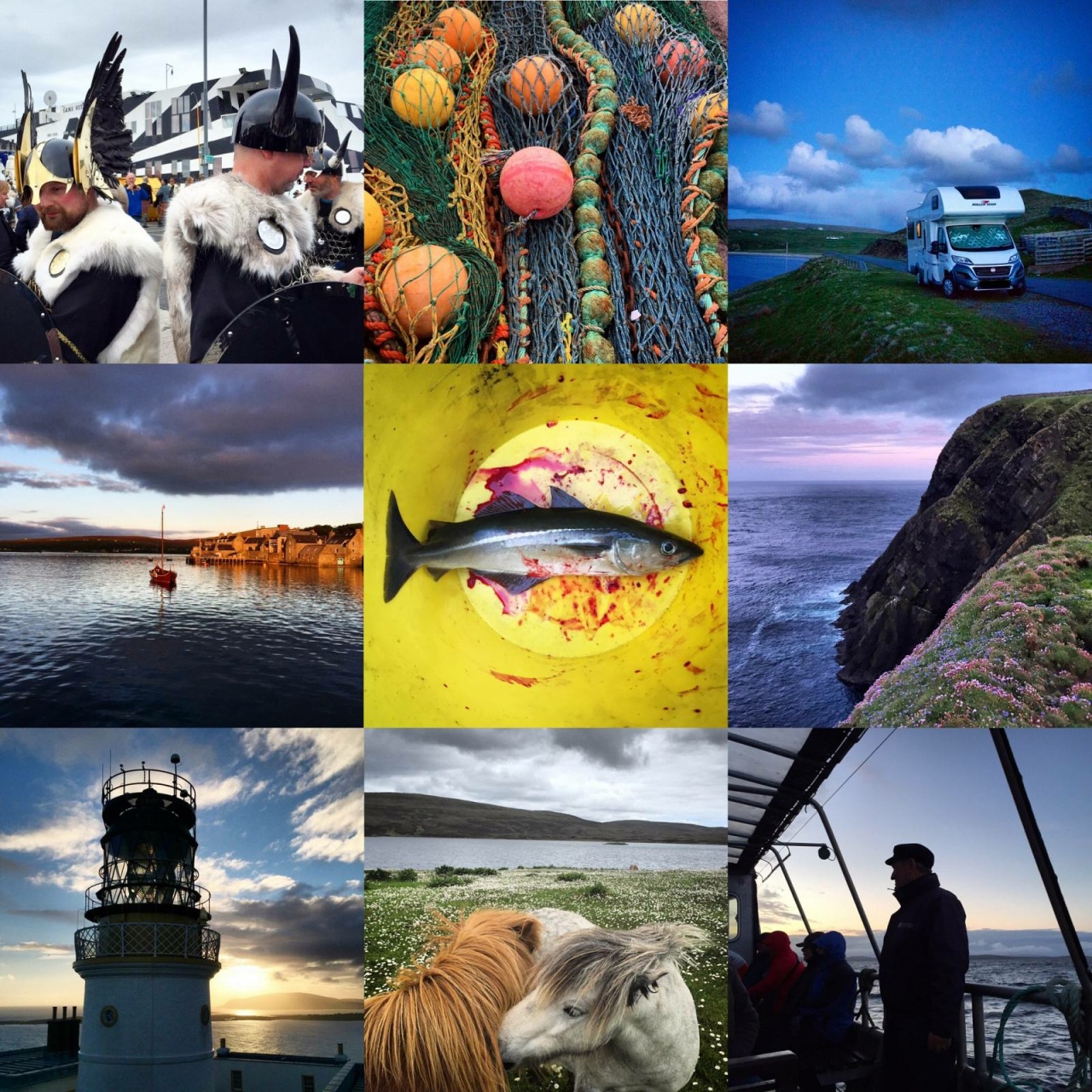Around midsummer, the Shetland cliffs are alive with the sound of a thousand chattering shutters. Hot on the tails of the birds comes the annual migration of naturalists, armed to the eyeballs with optics. But do these modern tools help us or hinder us in experiencing the world?
The great Robert Capa once said, ‘If your pictures aren’t good enough you are not close enough.’ To get close to Shetland’s wild and woolly exterior, what you really need is an iPhone and a camper van.
The digital revolution has spawned a photographic arms-race to produce smaller cameras with more mega pixels, expensive super zooms and editing software to take our photos within an inch of their lives. Does this only increase the distance between us and the experience?
In general, it is the men who obsess over the size of lens and sensor. My feminist colleagues tend to agree. Women know their technical stuff, but they look through the lens rather than fixate on the buttons or screen behind it. We forget the point is to capture what we see. Our pictures are only as good as our ability to see.
From a distance, which is where most people view Shetland, there are two realms that seem at odds, but they manage to co-exist. One appears colossal and corporate, while its opposite looks feathery and fragile. I wondered whether nature and industry could both thrive in Shetland, and I pitched the idea to the St-Brieuc Photoreporter festival in France. They agreed it was interesting and gave me the freedom to explore for three weeks.
For the task I used my professional DSLR to sketch out what I thought I was seeing. As the elements came together on location I would, unthinkingly, take out my iPhone and inevitably end up with the best picture.
There is something in the simplicity of function of a phone that allows the photographer to look. That’s the difference. We stop fiddling with the buttons on the back, and we look. I can’t undersell the importance of looking. A camper van, likewise, forces you to see the landscape with fresh eyes. Everywhere becomes a potential home, and you want an interesting view from the dinner table. I discovered wild camping vistas that would make 5-star hotels weep. Shetland’s humble car parks and lay-bys offer jaw-dropping views.
Bringing your own bed also has many other advantages for the explorer – you are flexible to respond to the weather, you can snooze as you wait for the right light, plus on Shetland you gain the rockstar status of a F1 driver. From Sumburgh to Unst, people literally stopped in their tracks to marvel at this modern wonder, turning their heads 180 degrees as it glided past.
If I was tired I could pull over and sleep. Once I awoke to find my van surrounded by axe-wielding Jarls! I had parked beside the start of the midsummer parade.
The best moment was after a sublime ‘simmer dim’ (the midsummer ‘midnight sun’) cruise to Mousa. The boat-load of birdwatchers returned to Sandwick, purring contentedly like storm petrels in the broch. We landed around 2.00 a.m., and I walked 50 paces to bed as the others began the long drive home. Ironically, this freedom involves taking everything including the kitchen sink, a shower, double bed and lounge, but it allows you to be right place at the right time.
A camper van may be the ultimate photographer’s tool to explore Shetland’s 1,600 wrinkled miles of coast. Add to this your mobile phone, and you can truly experience what is in front of you.
The best photographs are created from the natural curiosity and contemplation of the world. On Shetland I think the word ‘worship’ fits well. People travel to see great visions and then respond to the grandeur of light and land by sharing this with others. Advances in photography gear, if they are advances, will make it easier to capture that vision.
Gone are the days of tedious slideshows in a darkened room: we have advanced to tedious slideshows on our computer screens. When you get home and trawl through thousands of images you may find, like me, that it was the mobile moments of wonder that will lure us back.
Article commissioned for 60 North magazine. All photographs shot on an iPhone 6.
Seabird Cities work was awarded a travel grant from Photoreporter International, France.
